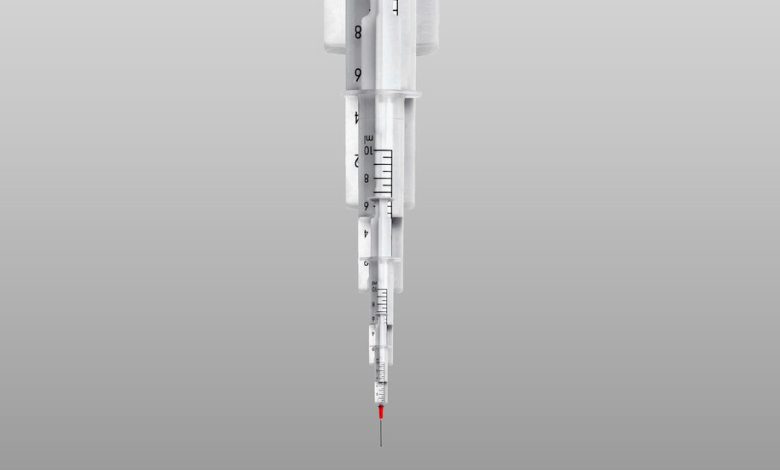Invent! Invent! Repeat.

We need better technologies to enable a better politics. But we need better politics to create better technologies. Maybe, just maybe, we’re on the verge of getting both.
On Monday, President Biden announced that Dr. Renee Wegrzyn, a biotech executive who previously worked at the Defense Advanced Research Projects Agency, better known as Darpa, would be the first director of the Advanced Research Projects Agency-Health, ARPA-H. The alphabet soup here obscures the ambition. Darpa is the defense research agency that was critical in creating the internet, stealth technology, GPS navigation, drones and mRNA vaccines, to name but a few. The record is remarkable, and it’s built on the agency’s ability to do something unusual in Washington: Make big, risky bets.
Shortly after winning the presidency, Biden persuaded Congress to fund an analogue focused on medical technology: ARPA-H. Why do we need an ARPA-H when the National Institutes of Health already exists? Because the N.I.H., for all its rigor and marvels, is widely considered too cautious. ARPA-H will — in a move some lament — be housed at the Institutes, but its explicit mandate is to take the kind of gambles that Darpa takes, and the N.I.H. sometimes lets go. Wegrzyn, Biden promised, is “going to bring the legendary Darpa attitude and culture and boldness and risk-taking to ARPA-H to fill a critical need.”
Here, two facets of the Biden administration reveal themselves, one of which I don’t think gets enough credit, the other which I worry doesn’t receive enough critique. The first is that the Biden administration has put technological advance at the very center of its agenda. Every big bill Biden has passed has carried a theory of how better policy could lead to better technologies that could lead to a better world. The second is that the Biden administration’s technological optimism is paired with an institutional conservatism: Too many Washington agencies proved too cautious during the pandemic, and little has been done to make them more daring.
Let’s start with Biden’s ambition. Four major bills have passed during his presidency: The American Rescue Plan, the Bipartisan Infrastructure Bill, the CHIPS and Science Act and the Inflation Reduction Act. Every one of them, at a core level, is about creating or deploying new technologies to solve ongoing problems.
The American Rescue Plan deployed vaccines and widespread testing and genomic surveillance to stifle the pandemic; the infrastructure bill is thick with ideas to make broadband access universal and develop next-generation energy and transportation technologies; CHIPS is an effort to break our reliance on Taiwanese and South Korean semiconductor manufacturing and keep ahead of China in fields of the future like artificial intelligence and quantum computing; and the Inflation Reduction Act uses tax breaks and loan guarantees to supercharge the wind and solar industries, build up advanced battery manufacturing, develop cost-effective carbon capture systems, and give the auto and home-heating industries reasons to go entirely electric.
Much attention, in recent years, has revolved around how technology can coarsen politics and denude communities. Look no further than the disinformation enabled by social media or the factories closed and towns wrecked by the communication and shipping advances that supercharged globalization. But new technologies can also create new possibilities. The politics of climate change would be impossible if solar panel costs hadn’t fallen by 89 percent and onshore wind costs by 70 percent in 10 years. California’s decision to ban the sale of cars running on internal combustion engines after 2035 would be unthinkable without the rapid advances in battery technology. Vaccination can curb the threat of disease in ways that social distancing can’t, as vaccinations can be sustained, but lockdowns become economically, politically and educationally ruinous.
And we are far from either the political or technological frontier. Take Covid, where the miracles and calamities coexist. The Biden administration’s vaccination effort started strong and then foundered on the shoals of political polarization, widespread misinformation and terrible messaging about booster shots. The money to upgrade school ventilation proved hard to spend. The F.D.A. dragged its feet on allowing rapid tests, which left us without anything near the tools we needed when the Omicron wave began.
Some problems persist: I have spoken to some of the researchers working on universal coronavirus vaccines and I’m stunned by how little help they’re getting. One described months of delay trying to find the monkeys needed for trials. You might think the U.S. government, with all its power and might, would name a point person that the teams working on these vaccines could call if they needed something, anything. Instead, many of our most brilliant virologists spend their work days trying to find lab animals and figure out how to conduct due diligence of manufacturing facilities.
And I have been puzzled by the Biden administration’s disinterest in building on the Trump administration’s central success: The Operation Warp Speed program that sped the vaccines into development. We could have Warp Speeds for so much more (and we are far from done with vaccines). I’ve asked this question of top Biden staffers, and I cannot say the answers I’ve heard have made much sense. I suspect the problem here relates more to crediting the Trump administration than with the possibilities of the Warp Speed program. Trump wasn’t exactly eager to build on Obama administration successes, either. But that doesn’t explain why Biden hasn’t launched Warp Speed-like policies under a new brand. Call them Moonshots. Call them Biden Bets. It doesn’t matter.
But what we have not done should not distract from what we have done. Vaccines, treatments like Paxlovid, improvements in hospitalization protocols and rapid testing — along, of course, with post-infection immunity — have uncoupled caseloads from death rates. The pandemic still exerts a terrible toll — hundreds still die each day from the disease — but it is far less than what it would be otherwise, and it could be far better were boosters more widely taken and therapeutics more widely used. Something like normalcy is possible for many people today, and pharmaceutical innovation and deployment is a driving cause.
What is true for Covid is true for many diseases that don’t receive as much daily coverage. Cost dominates Washington’s debates over health care. What we actually get for all that spending is a much more distant concern. It’s cliché, at this point, for politicians to brandish charts showing the stunning rise in projected health spending over the next 40 or 75 years. But those charts have always bugged me. Doesn’t what we get for that spending matter? You tell me if we’re living healthy lives until age 175, and then I’ll tell you whether spending a hefty share of G.D.P. on medical care is a scandal or a bargain.
The Inflation Reduction Act allows Medicare to negotiate down certain drug prices. Every other rich country lets the government negotiate drug prices, and for good reason. Pharmaceuticals are not a normal kind of market good. If you can’t afford the flat screen TV you want, you leave the store. If you can’t afford the last-ditch cancer treatment that might give your spouse 10 more years of life, you sell anything, you mortgage everything, to get it. Drug companies can charge whatever they want, and so they do. The median price of a year’s supply of a drug launched in 2021 was an eye-popping $180,000. Only governments have the negotiating power to curb those cost increases. Other governments do. Citizens of countries like Canada and Britain pay far less for drugs that were developed here, oftentimes built on publicly funded research.
The counterargument to this is that the high drug costs borne by Americans is subsidizing pharmaceutical innovation for the entire world — and as frustrating as it is, it’s worth it. I’ve never found this convincing. Should we then pay 50 percent more for drugs to wring even more innovation out of the system?
But the underlying idea — pharmaceutical innovation matters, and we should move heaven and earth to encourage it — is right. The way we treated the Covid vaccines should be a model. We made their development a national priority and we ensured that the profits of those who developed them were guaranteed. But we also made sure the vaccines would be available and affordable to all Americans — we did not allow pharmaceutical companies to charge whatever they thought the market would bear, or insurance companies to pile on the co-pays. Equity and innovation are often pitted against each other in our politics. The success of Warp Speed shows what can happen when they are paired.
Democrats should braid policies to make drugs cheaper with policies to make drug innovation easier and, in some cases, more profitable. I spent some time this week talking to Heidi Williams, an economist at Stanford who studies drug development, and the point she made is so obvious it’s a wonder we haven’t done more about it. We spend a lot on the beginning of drug development — basic science and research — and even more on the products that ultimately get developed. But we neglect the middle: All the unglamorous, difficult infrastructure needed to turn a promising molecule into a miraculous treatment.
One example: Much of the difficulty and risk of drug development comes in running clinical trials. One reason clinical trials are hard to run — as we saw during Covid — is that it’s hard to find the patients needed to run trials that will generate good data, fast. Years ago, we created a national registry for cancer patients that made it much easier to run cancer studies in the United States — and now, compared with drugs for other diseases, far more cancer trials are run in the United States. We could, and should, scale that model.
Bernie Sanders used to promote an idea for creating a system of prizes to run parallel to the patents we normally use to make drug development profitable. The government could identify, say, 12 conditions that it wants to see a drug developed for. The first group to develop and prove out such a drug would get a princely sum — $100 million, or $500 million, or a billion dollars, depending on the condition and the efficacy. In return, that drug would be immediately off-patent, available for any generic drug producer to manufacture for a pittance (and available for other countries, particularly poor countries, to produce immediately).
More money might be good — particularly spent in new ways, like for prizes or ARPA-H — but Washington spends tens of billions of dollars now on medical research, and it’s worth asking if that is all well spent. A thoughtful report from New Science backs up a complaint I’ve heard privately for years: The N.I.H. is a remarkable institution beset by a deep internal conservatism. ARPA-H is an admission of this problem, even as it is located within the N.I.H.: If the N.I.H. were making the kinds of bets ARPA-H is designed to make, there’d be no reason for ARPA-H at all. But that raises the obvious question of whether the N.I.H. should be more daring at its core.
There are, to be fair, good reasons for caution, and they are political, not just scientific or economic. The same Republicans who lambaste government for being too conventionally minded and slow-moving weaponize failed grants and odd gambles as wastes of taxpayer money, creating the incentives for the precise bureaucratic caution they then condemn.
But the pandemic should leave no one convinced of the infallibility of our health agencies. The N.I.H. proved unable to shift focus quickly when the pandemic hit — only 2 percent of its 2020 budget went to Covid research, one study found. The F.D.A. was excruciatingly slow to approve the same rapid tests that Europe was using long before us. The C.D.C. was, flatly, a mess. Yet none of the failures we witnessed in real time led to major reforms of these agencies. That can’t be right.
These are institutions full of brilliant, hard-working people who are doing their best within the strictures placed around them. Those strictures should, fairly often, be revisited, or at least reviewed. But in Washington, the need to defend treasured institutions like the N.I.H. from budget cuts and political interference leads to believers in the organization becoming defenders rather than improvers. That’s how you get an odd situation like ARPA-H, which is clearly meant to operate radically differently than the N.I.H., being made part of the N.I.H., over the objections of many of its early proponents.
Last week, I wrote about how much of Biden’s agenda relied on building, and what it would take to make that much building possible, at the speed it needs to happen. But Biden’s agenda is just as reliant on inventing — and just as much needs to be done to make the government a dearer friend to invention.
Still, this is an unexpectedly thrilling side of Biden’s presidency. A liberalism that is as ambitious about solving problems through invention as it is through redistribution would be powerful indeed.
The Times is committed to publishing a diversity of letters to the editor. We’d like to hear what you think about this or any of our articles. Here are some tips. And here’s our email: [email protected].
Follow The New York Times Opinion section on Facebook, Twitter (@NYTopinion) and Instagram.




